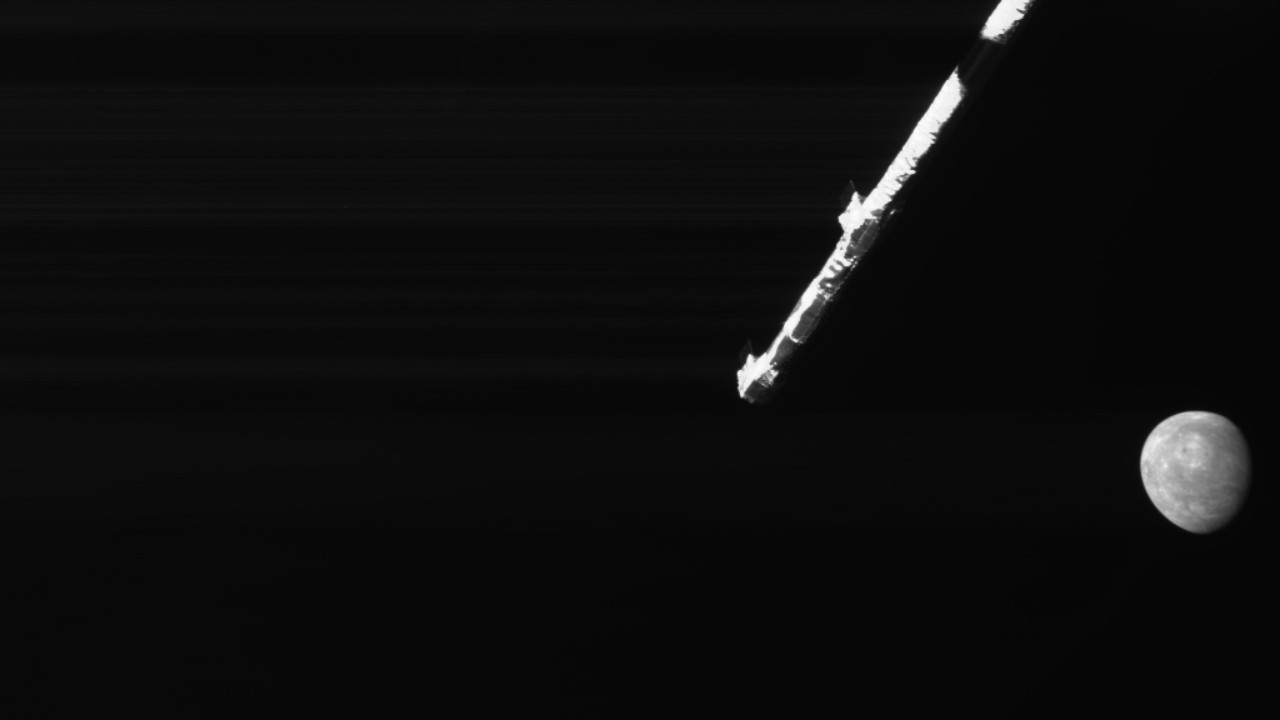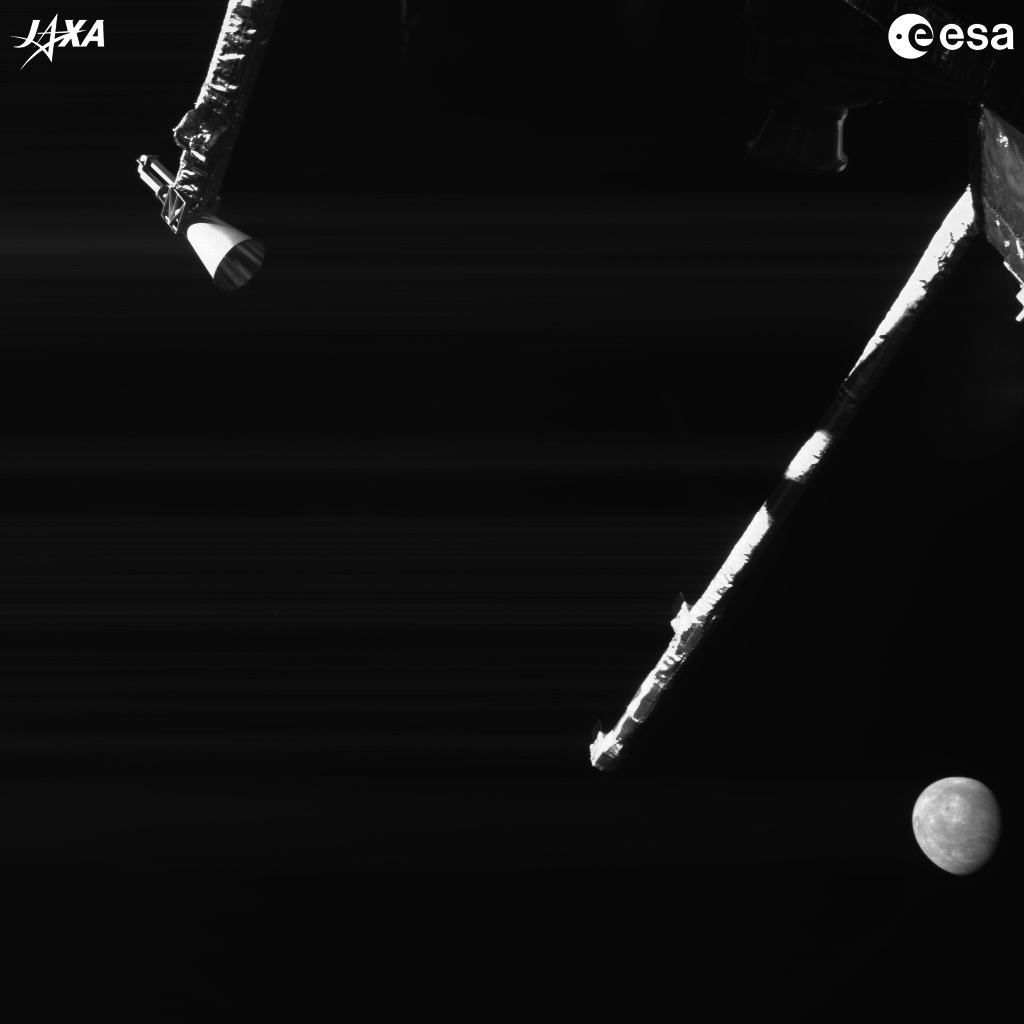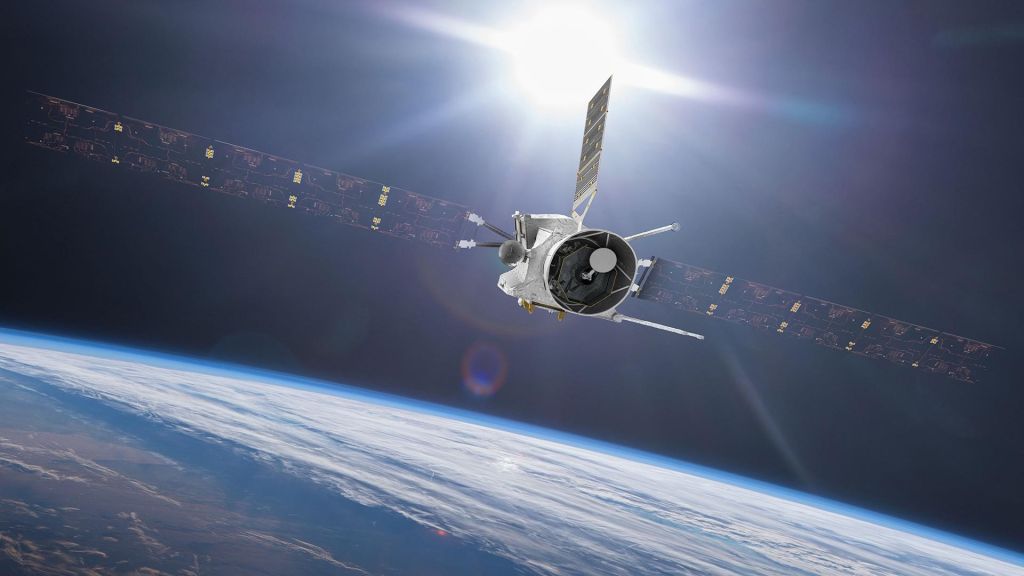
The BepiColombo Mercury probe flew close to our solar system's innermost planet this week, capturing another haunting image as it zoomed by.
On Sunday (Dec. 1), BepiColombo made its fifth of six flybys of Mercury. On this most recent rendezvous, the probe was 200 times farther from the planet than on its previous flyby, which saw it come within just 103 miles (165 kilometers) of Mercury's surface.
Despite the greater distance in this recent flyby, the probe was once again able to generate an eerie image of diminutive Mercury, shining alone in the darkness of space. This fifth flyby is the first during which the probe used its Mercury Radiometer and Thermal Infrared Spectrometer (MERTIS) instrument, which measures the temperature and composition of the planet's surface and reveals what types of minerals are found on the planet's surface, which the European Space Agency (ESA) says is "one of the key Mercury mysteries that BepiColombo is designed to tackle."
BepiColombo is operated by the ESA and the Japan Aerospace Exploration Agency (JAXA). The probe launched in 2018 atop an Ariane 5 rocket on an eight-year voyage that will place it in orbit around Mercury.

The original mission plan had the spacecraft arriving in December 2025, but BepiColombo experienced thruster glitches that slowed things down; the probe is now set to be inserted into Mercury's orbit in November 2026.
Once there, the spacecraft will separate into two separate orbiters: ESA's Mercury Planetary Orbiter and JAXA's Mercury Magnetospheric Orbiter. The pair will then study the small, hot world with 16 different science instruments.

The spacecraft has been flying by Earth, Venus and Mercury since 2020, use the planets' gravity to help put it on the right course to enter Mercury's orbit.
BepiColombo made its first Earth and Venus flybys in 2020, and first swung past Mercury on Oct. 1, 2021. After one flyby in 2022 and 2023 each, the probe then made close approaches to Mercury on Sept. 4, 2024 and Dec. 1, 2024.
The probe's next Mercury flyby will occur on Jan. 8, 2025.







